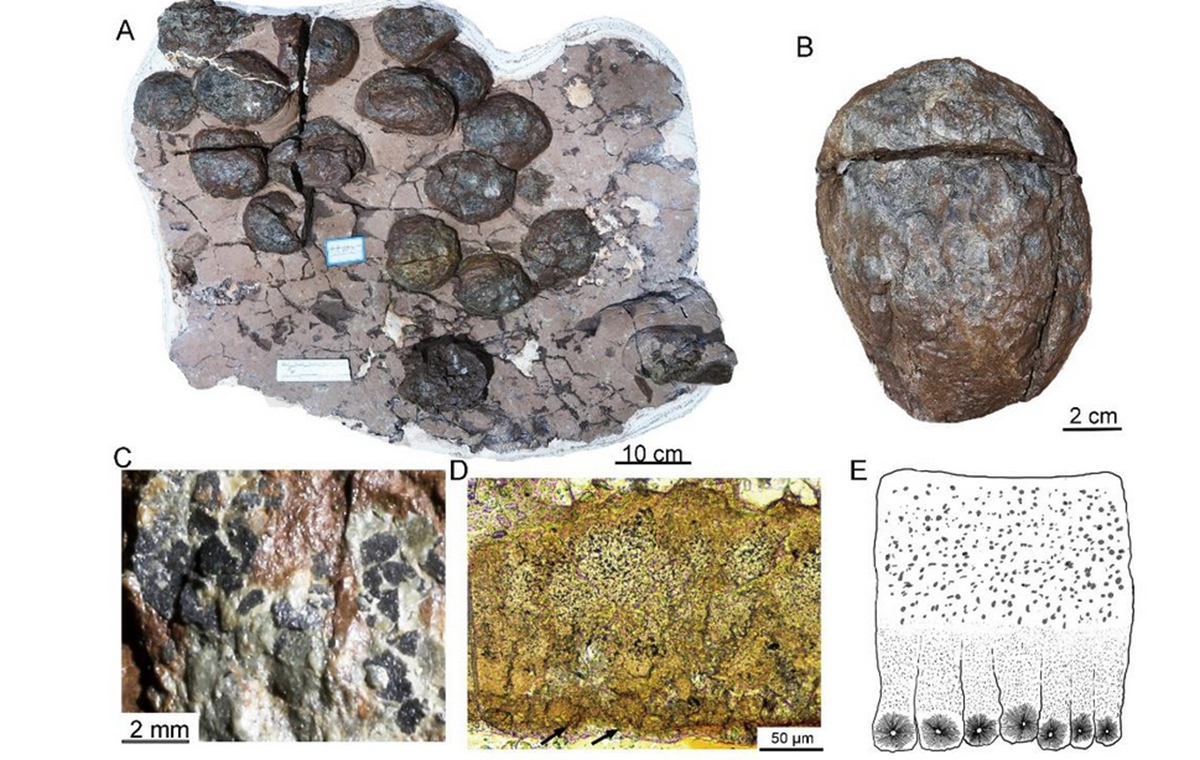
Photo: Xinhua
Led by a group of Chinese researchers, a recent paleontological project has revealed a secret hidden behind fossilized dinosaur embryos that were dating back to 190 million years ago. The study made a new milestone beyond the current understanding of the early dinosaur eggs' evolution.
The current research is based on the analysis of a dinosaur fossil cluster discovered in Southwest China's Guizhou Province. The fossil cluster, which belonged to the early Jurassic period, consists of three adult dinosaur skeletons and five litters of dinosaur egg fossils that contain precious embryos.
By looking into those fossils, researchers found that those eggs belong neither to the "soft shell" nor "hard shell" groups. Their attribute is actually in-between the two, by which it terms professionally by paleontologists as "leathery eggs."
The "leathery eggs" denote a "rare evolutionary process" of dinosaur eggs. Thomas Stidham, an experienced paleontologist from the Institute of Vertebrate Paleontology and Paleoanthropology (IVPP) of the Chinese Academy of Sciences, told the Global Times.
"Think about living bird eggs. They have hard shells. Birds are dinosaurs and fossil dinosaur eggs have hard shells like living birds. Turtles, crocodiles and other reptiles have soft eggs. This new research is proposing that early dinosaurs had soft eggs [like most reptiles] and evolved the hard shell eggs later," the expert said.
Such a discovery might sound less exciting to outsider viewers, yet it was truly a milestone that challenges the current assumption by Western scholars that the eggs of the dinosaurs' common ancestor were "mainly soft-shelled." In 2020, such of an idea was officially proposed by well-known US paleontologist Mark Norell and a Yale study team.
"It was quite a big discovery to the field by then, and the US team had given another argument that those soft-shell eggs of ancient dinosaurs were rare due to their fragile and hard-to-preserve nature," said paleontologist Zou Hesi.
For investing the "truth of eggs," the Chinese team has spent eight years. They have collected 210 groups of reptiles' samples and conducted a detailed classification on dinosaurs' different eggshell types and eggshell thickness.
Yu Yilun, a researcher of the project from the IVPP, said that those egg fossils were found to be in round and oval shapes. Trough analyzing a complex evolutionary model, it was found that the "earliest dinosaur eggs were leathery" and such a texture can better protect dinosaur eggs free from chipped. Including the IVPP expert, the study also involves researchers from other institutions of China University of Geosciences, Wuhan, Guizhou Provincial Museum and Yunnan University.
Despite the achievement of Chinese researchers was published recent on National Science Review, the discovery of the dinosaur cluster was made in 1999.
Xu Xing, a paleontologist of Yunnan University who has witnessed the project's decade-long development, said that those precious fossils belonged to dinosaurs of the Sauropods family. Such a discovery was novel that researchers have given it a new named called Shou Hu Qian Long.
The special name was made of two parts. "Qian" is the short form stands for the "Guizhou Province" in Chinese culture. It denotes the dinosaur's origin. "Shou Hu," which it means "safeguard" in Chinese refers to the particular dinosaur that has been found to association with its embryo. This suggests that the giant creature that can reach more than six meters in length was a caring parental figure once protects its offspring.
The discovery made in 1999 marks the world's earliest dinosaur fossil to which the "egg and its preserved embryo" were still attached together. It was also the first time a dinosaur species was named after Guizhou province.
"The eggs were found to contain the earliest and most completed eggshell structure. It provides an important basis for studying the origin and evolution of dinosaur eggs," Han Fenglu, a paleontologist of the project from the China University of Geosciences, Wuhan remarked.
Zou told the Global Times that if eggs of the Sauropods Shou Hu Qian Long were found to be leathery in texture, then other similar kinds such as Massospondylus and Lufengosaurus might also fall into the same category.
The discovery of Lufengosaurus also known as "Lufeng dinosaur" is a major highlight to China's dinosaur history. It was first discovered by Yang Zhongjian, who is dubbed as the "father of Chinese dinosaur research" in 1938 Lufeng county, Southwest China's Yunnan Province. It marked the first complete dinosaur fossil has ever been found in China.




